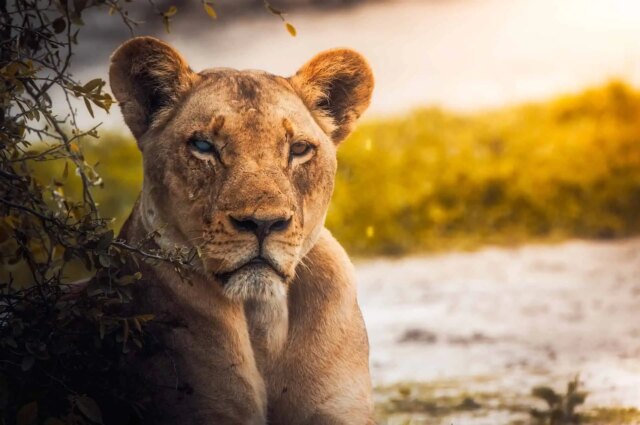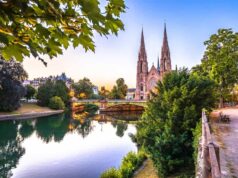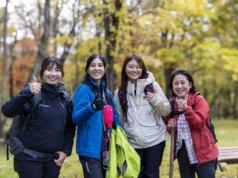The best time to visit Serengeti National Park is from January to February or from June to September, although you should plan your trip around the movement of the Great Migration.
For example, winter is the best time to see the herd in the Southern Serengeti, while the Western Corridor and Northern Serengeti are the best places to spend the summer and fall months. Most safari operators have a good idea of where the animals are going and when, and most will adjust their itineraries based on the movement of the herd.
Temperatures remain relatively constant, with daytime highs in the 80s (~28°C). You’ll find cooler weather in the Ngorongoro Conservation Area due to its higher elevation.
Regardless of the timing of your safari, it is advisable to save time and fly directly into the Serengeti to begin your wildlife adventure. You can fly into the Serengeti National Park daily from either Zanzibar, Dar es Salaam or Arusha.
This 4-day itinerary has been specially designed to give you the most comprehensive experience possible.
Let’s take a closer look at the best times now.
Related read: 10 Things to Know About Serengeti National Park
Here’s a brief outline:
When Is the Best Time to Visit the Serengeti National Park?
April and May are the wettest months, and many lodges and camps close for this slower season.
The winter months of January and February are the best time to visit the southern Serengeti and the Ngorongoro Conservation Area. Although most visitors enter the park from the south, this region is largely ignored by tourists due to the lack of wildlife for much of the year.
However, the short rains that occur in November bring the herd back to its breeding grounds. During the winter, these vast grasslands teem with wildebeest, zebra and, of course, predators.
March-May
Spring ushers in the park’s rainy season. Since most visitors are deterred by the wet conditions, you can expect to find lower prices for excursions and lodging.
Keep in mind that most semi-permanent campsites and some lodges close to tourists during this time, so plan ahead.
June–September
During the summer and fall, the Great Migration makes its way north, where the plains are ablaze with colorful flora. In the early summer months, the herd is most likely to be found near the Grumeti River in the park’s western corridor, although you’re sure to catch a glimpse of a smaller, rogue group in Lobo Valley. Watching the grazers take on the river’s vicious crocodile population can be the experience of a lifetime.
July-September
Between July and September, wildebeest and zebra mingle with elephants and giraffes at the beautiful Lobo and Bologonja Springs in the northern part of the park.
October-December
Short, sporadic showers signal the return of the Great Migration to the southern grasslands. Plan to spend most of this month in the western corridor along the Grumeti River or at Mbalageti Tented Lodge, a permanent campsite with sweeping views.
Tanzania’s Serengeti National Park offers a spectacular wildlife experience year-round, but the best times to visit depend on what you want to see and experience during your safari adventure.

Here’s a Breakdown of the Best Times To Visit the Serengeti National Park Based on Seasonal Variations and Wildlife Movements
January–February
- Ideal for viewing the Great Migration in the southern Serengeti and Ngorongoro Conservation Area.
- The region is teeming with wildebeest, zebra and predators during this time.
- Temperatures are generally warm with daytime highs in the 80s (~28°C).

March-May
- Spring marks the beginning of the rainy season.
- Fewer tourists and reduced prices for excursions and lodging.
- Some lodges and semi-permanent campsites may close during this time.

June–September
- The Great Migration moves north, with prime locations including the Western Corridor and Northern Serengeti.
- Colorful flora graces the plains during this time.
- Opportunities to observe wildlife interactions, including crossings at the Grumeti River.
- Wildebeest and zebra mix with other wildlife such as elephant and giraffe in various areas.
Related read: Top Places to See African Elephants
October–December
- The Great Migration begins to return to the southern grasslands, marking the end of the annual cycle.
- Focus on areas such as the western corridor along the Grumeti River.
- Mbalageti Tented Lodge offers sweeping views and a great vantage point.

Key Considerations
When deciding when to visit the Serengeti National Park, you need to think about the below:
The Weather
Temperatures remain relatively constant, but rainfall is more common from March to May.
Crowds
Peak tourist seasons coincide with the dry months and the Great Migration, especially from June to September.
Wildlife viewing
The movement of the Great Migration dictates wildlife sightings, so plan your visit accordingly to witness this natural phenomenon.
Lodging
Some accommodations may close during the rainy season, so check availability and plan ahead.
Related read: Serengeti Balloon Safari in Tanzania

Ultimately, the best time to visit Serengeti National Park depends on your wildlife viewing preferences, weather conditions, and crowd size.
Whether you choose to witness the Great Migration or explore the park during the quieter rainy season, the Serengeti promises an unforgettable safari experience all year round.










